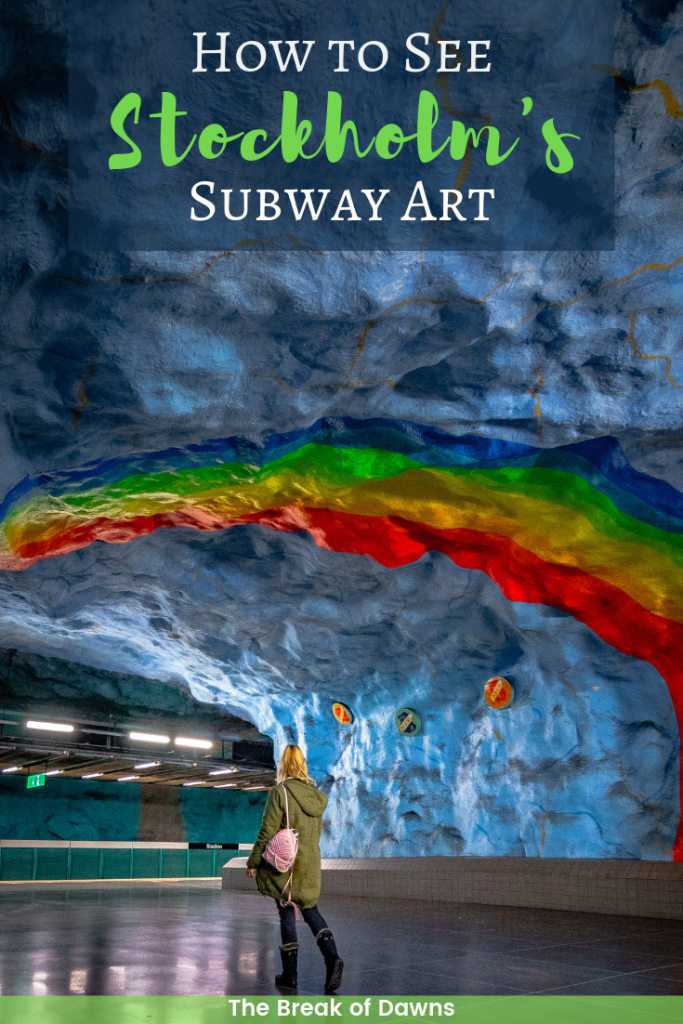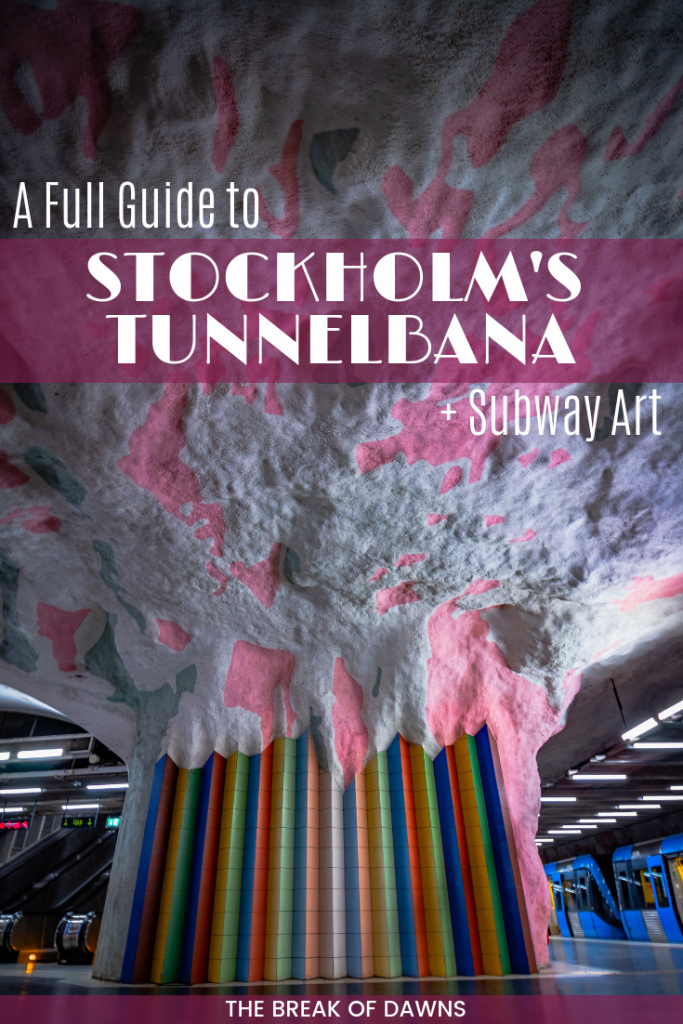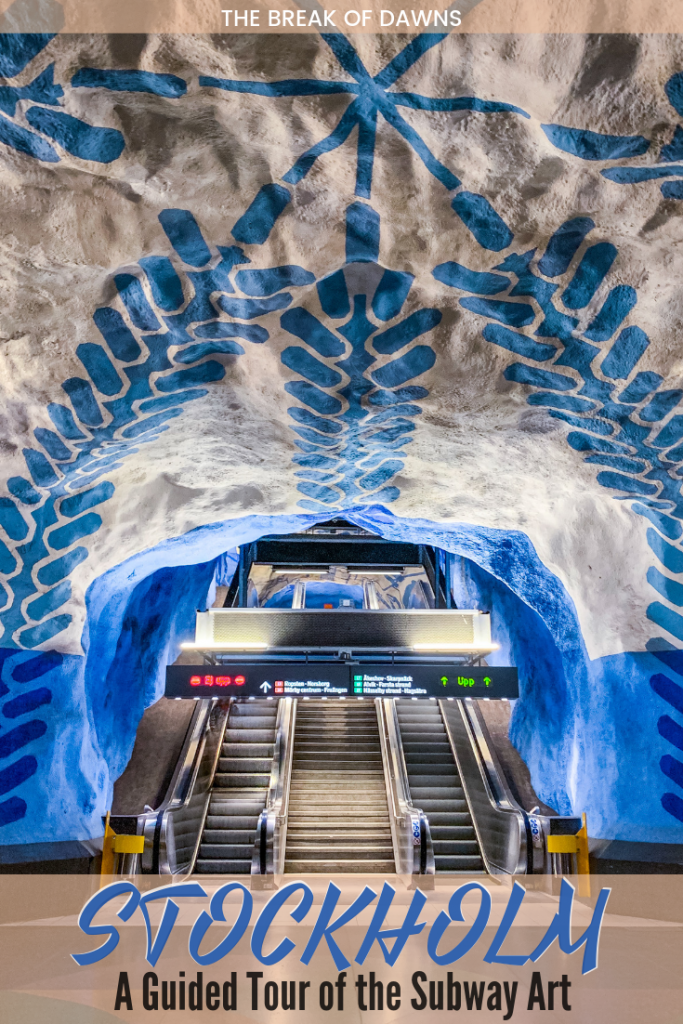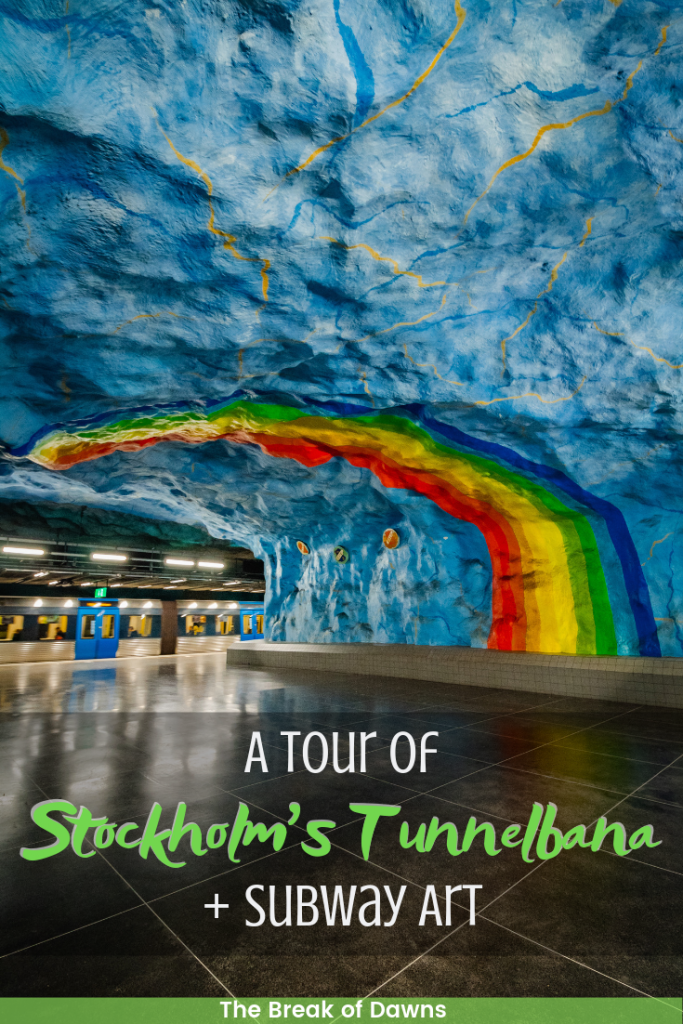
Stockholm exudes a whole vibe of its own and that’s even more apparent throughout the subway system. At nearly 70 miles long, Stockholm’s Tunnelbana is home to the world’s longest art exhibit. With all of those different locations, following a Stockholm subway art guide is the best way to see it all.
Over 90% of the subway stations feature some work of art. These sculptures, paintings, engravings and murals each represent the various districts of Stockholm. Most are dedicated to important people and societal issues both past and present.
If you’re like me and are a newb at public transportation (helllooo United States!), navigating a subway system is as foreign as the city itself. Use this guide to help you get around to the best art in Stockholm’s Tunnelbana.
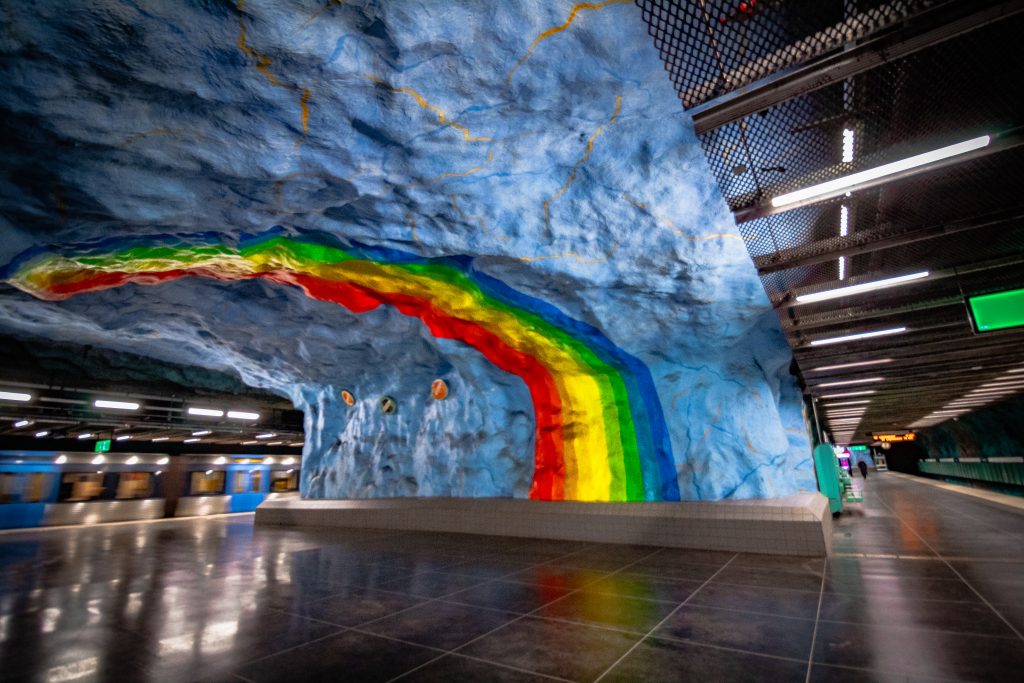
Tickets & Pricing for Stockholm’s Subway
Purchasing tickets for Stockholm’s Tunnelbana is very simple and can be done in 3 different ways:
- One-Time Journey:
- How long is it good for? Up to 75 minutes and is valid as soon as it’s purchased.
- Where do I buy the ticket? At a ticket machine before the gates, ticket booth or on the SL app.
- How much is it? For adults aged 20-64, the price is 45 SEK or $4.85. A discounted rate is available for people under age 20 and seniors 65 and older for 31 SEK or $3.33.
- Travel Cards:
- How long is it good for? Valid for 24 or 72 hours, it’s optimal for those using the subway system multiple times throughout their stay.
- Where do I buy the Travel Card? At SL Center, Arlanda Airport, Stockholm Central station, certain hotels, small scale ticket agents like a tobacco shop.
- How much is it? 24 hour purchase: SEK 130 or $13.98 for adults and SEK 90 or $9.68 for the discounted fare.
- SL Access Cards:
- How long is it good for? 7 Days up to 6 years.
- Where do I buy the SL Access Card? A ticket agents, SL Centers or at commuter rail stations.
- How much is it? A fee for the reloadable card is 20 SEK or $2.15. The fare price depends on how long you want to load the card for. A 7 day ticket is SEK 335 or $36 for adults and SEK 225 or $24.20 for the discounted fare.
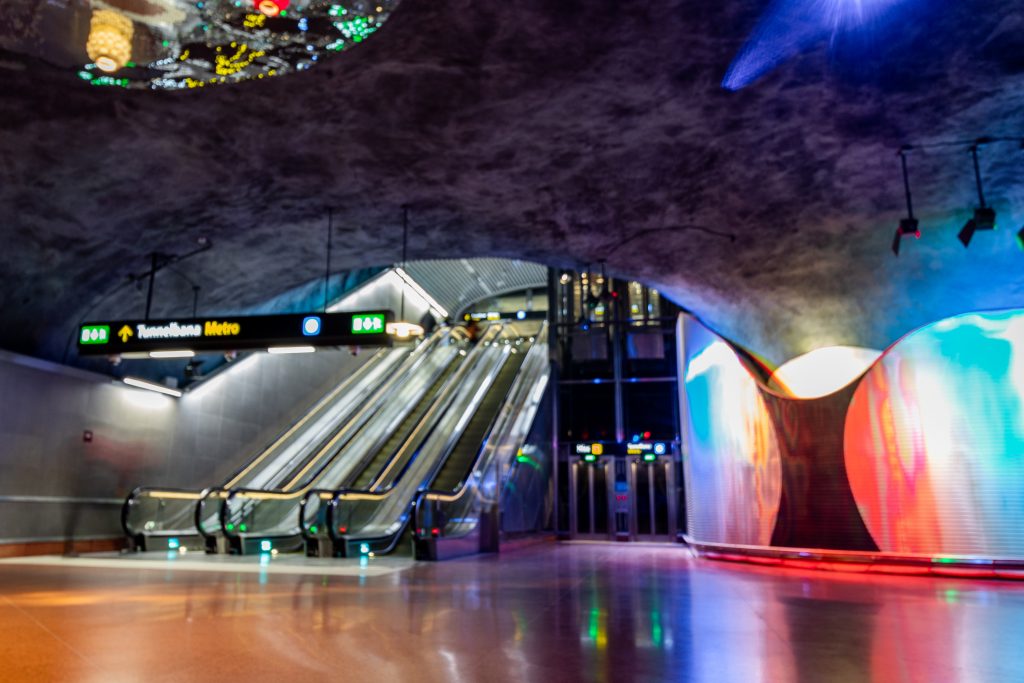
How to See the Stockholm Subway Art
From June to August, SL offers free guided art tours in English. During the tour you’ll learn about the public art in Sweden, why the art is here and how it’s chosen. Learn more about the tour here.
The other option is how I did it, by taking a self-guided tour. With trains operating from 5 AM to 1 AM daily, it’s very simple to see the art in Stockholm’s subway.
Read More: The Solo Girl’s Guide to Stockholm
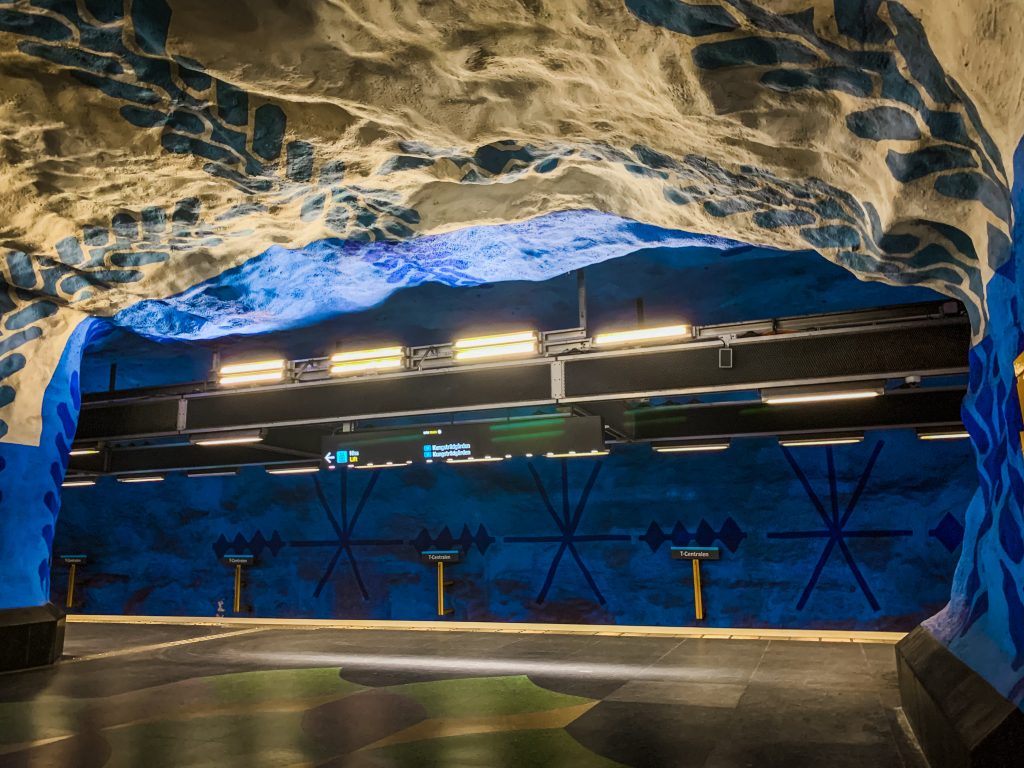
The Best of the Stockholm Subway Art Map:
There are 3 separate lines that operate throughout Stockholm’s Tunnelbana: Red, Green & Blue. Interchanges for the subways are at four different stations (Black marker): T-Centralen, Slussen, Gamla Stan and Fridhemsplan.
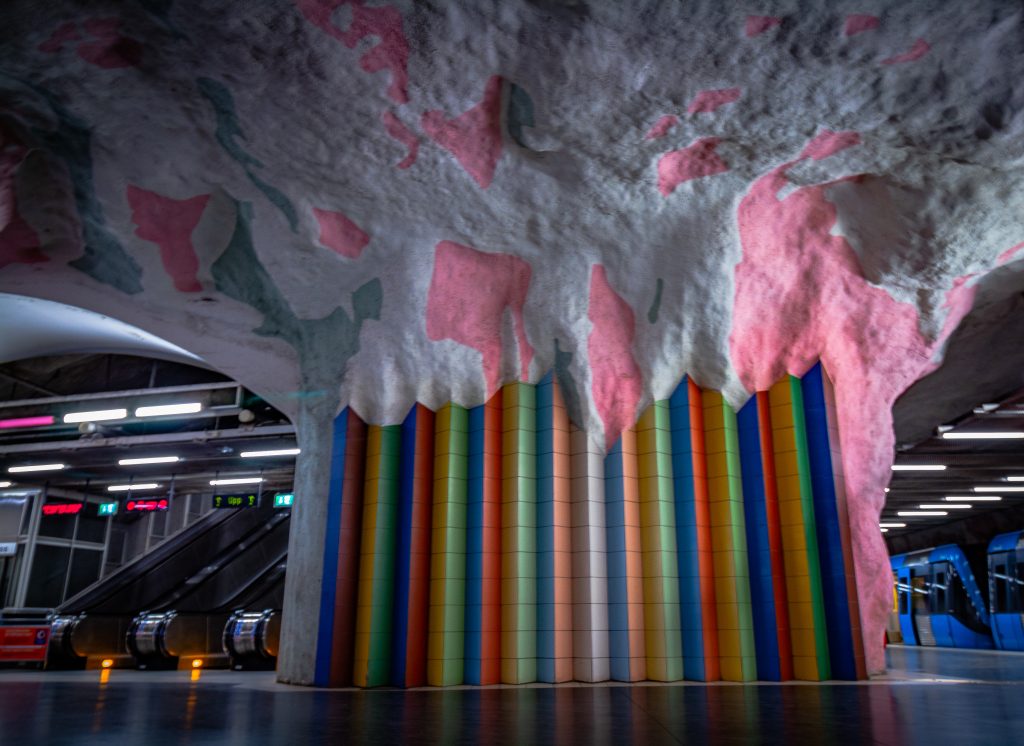
Red Line
- Östermalmstorg: At about 75 below street level, this is the third deepest station in Stockholm’s subway and displays an advocation for peace, women’s rights and environmental issues.
- Stadion: One of Stockholm’s first cave stations, the artists wanted to show commuters that “there is a sky not far above.” This station, in close proximity to Östermalms, welcomes festival goers for Pride every year with its vivid rainbow.
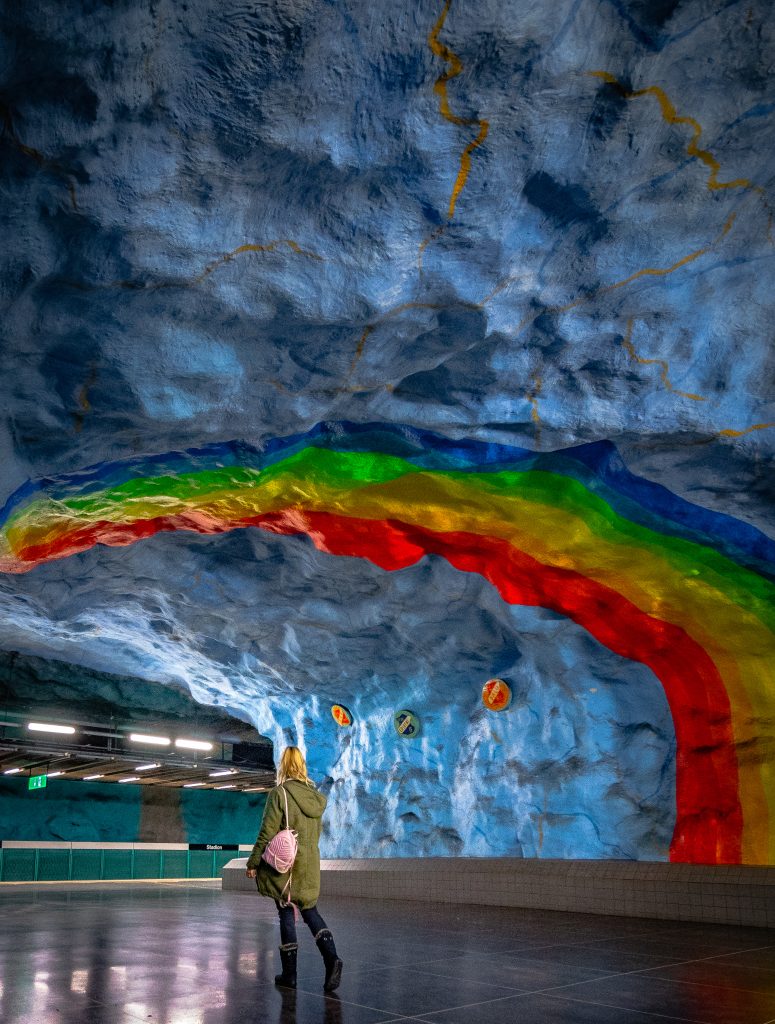
- Tekniska Högskolan: Built near the Royal Institute of Technology, it’s purpose is for students and professors to get there easier. It features multiple scientific dedications like Plato’s five elements and Newton’s laws of motion.
- Mörby Centrum: Probably my favorite station for the subway art is here at Mörby Centrum. The art here is so subtle and unnoticeable that I pass right by it when departing the subway. Riding the escalators to the top of the stairs, I get to the carousel and I know I must have missed it. I ride the escalator right back down and there it is, this beautiful rainbow stretching into the egg-spotted ceiling. Apparently the walls of this mural actually change color depending on where you’re standing, probably explaining why I probably walked right by it!
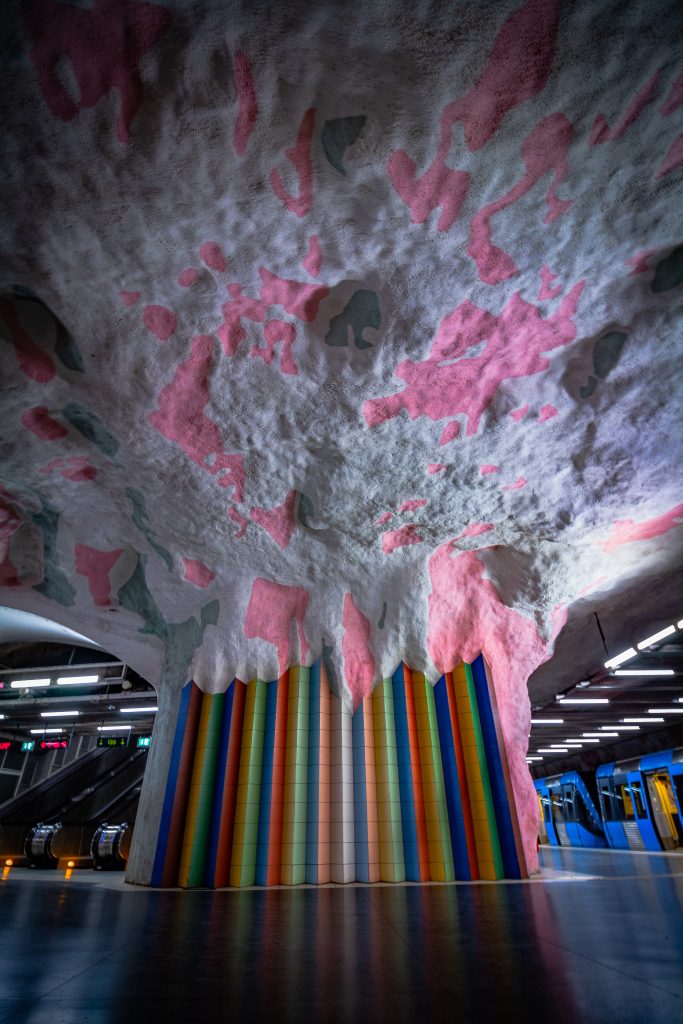
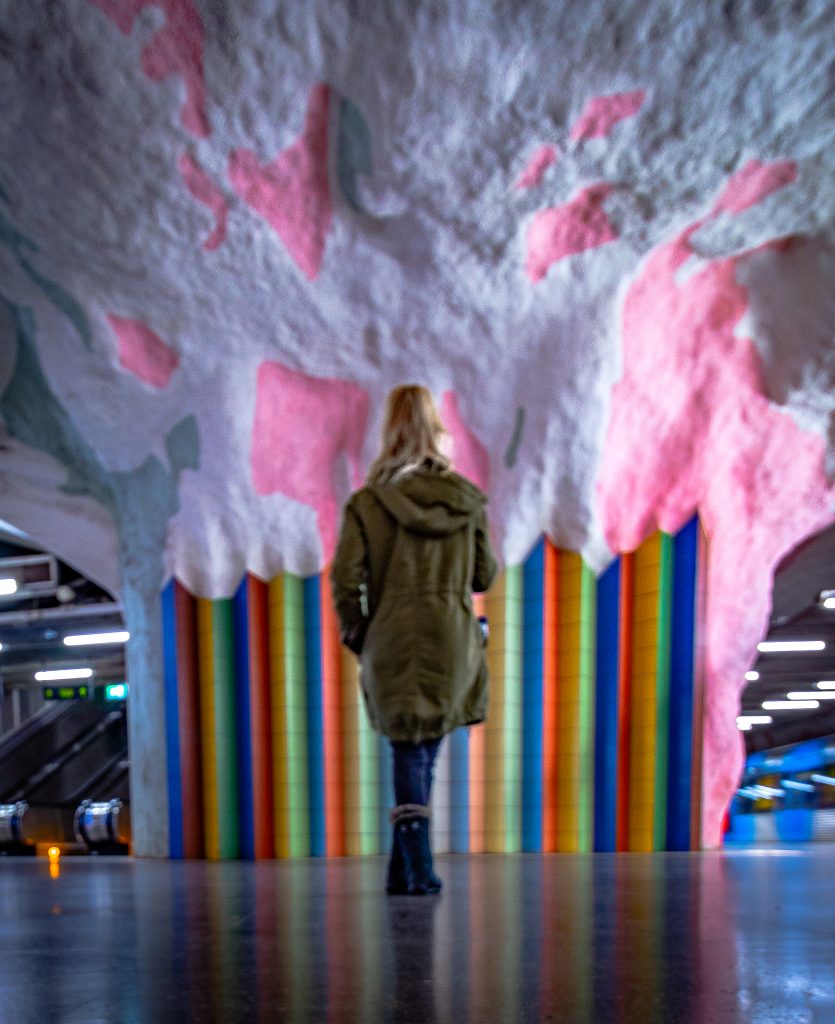
Blue Line
- Kungsträdgården: This amazing subway station sits next to one of Stockholm’s oldest parks “The King’s Garden.” From the 16th to mid-19th century, this site was home to a Palace until it burned down and this station bids well to the replicas of art in that Palace. Another fun fact about this station is that it’s home to northern Europe’s only cave-dwelling spider.
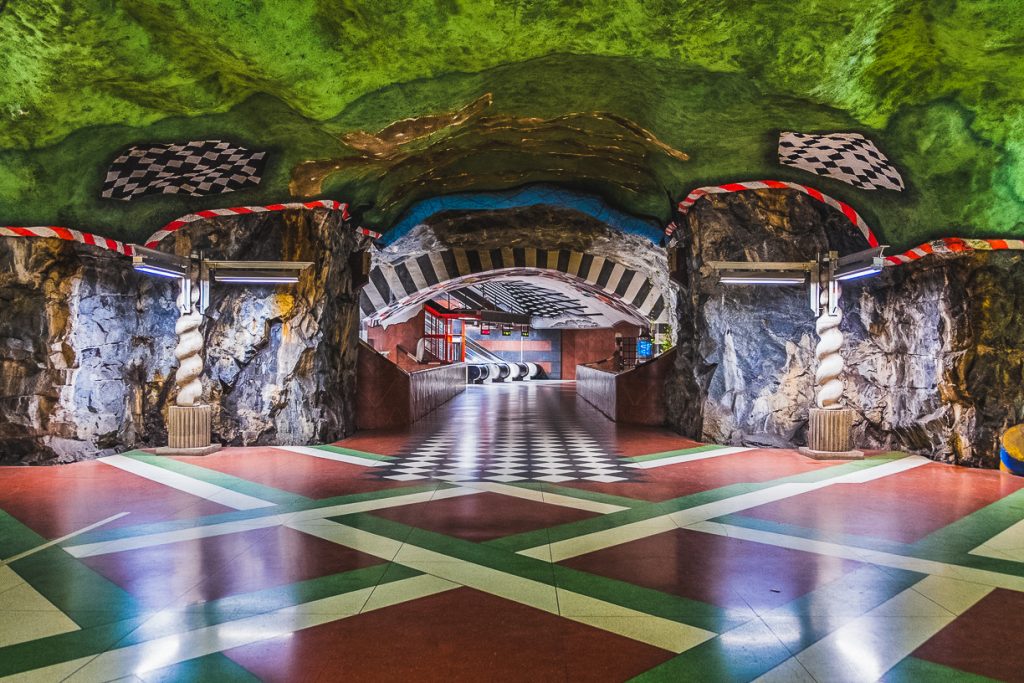
- T-Centralen: This is the main hub for Stockholm’s subway and any line you need to get on, you can do from here. T-Centralen was the first station to feature artwork in Stockholm. The beautiful blue color that creeps up the wall through flowers and leaves is a stunning sight to see, especially while commuting through the city.

- Solna Strand: The artist of this station displayed the stark contrast between the light aboveground and the dark cave below ground through black and white jagged cubes that jut out from the walls and ceilings here.
- Solna Centrum: The colors below, a deep red and a bright green, represent a forest in the red sunset which is setting behind the trees. The artists here came back and added to their work, creating illustrations of important issues from Sweden in the 1970s such as the environment and deforestation.
- Hallonbergen: Colorful and a little quirky, the artists here took inspiration from drawings made by their children and from their own childhood, creating a very imaginative subway station.
- Tensta: Tensa is dedicated to all of the immigrants who have came to live here. The art features animals and leaves connecting each other by roots. Some of the more popular pieces in the station are “Kinship”, “Solidarity” and “A rose for the immigrants.”
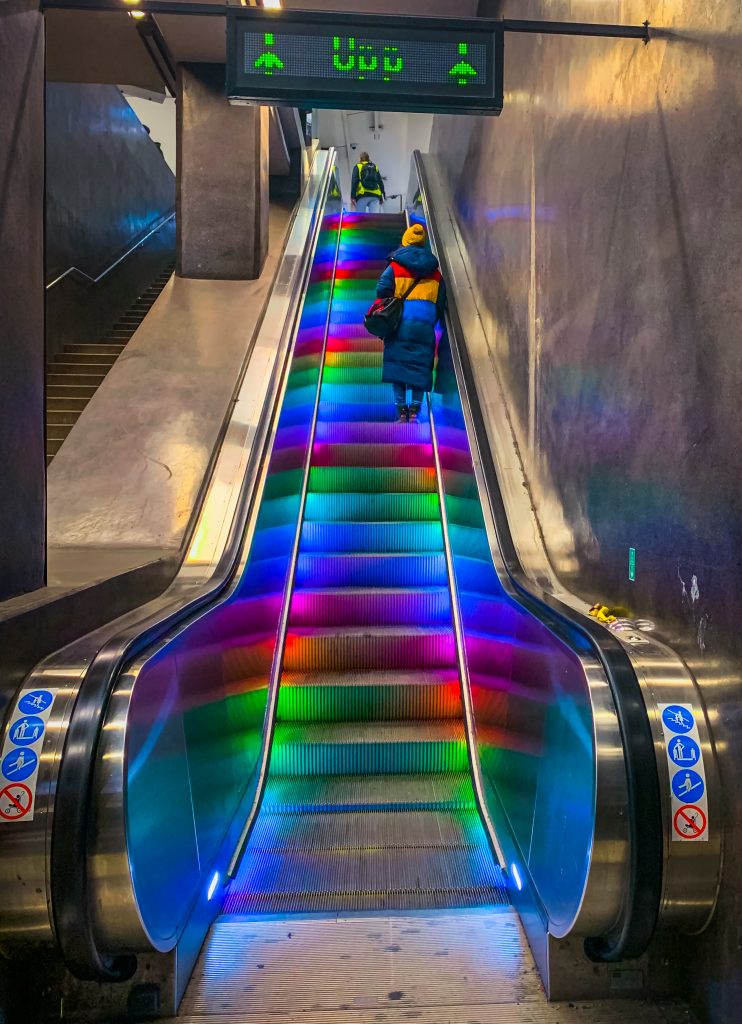
Green Line
- Radhuset: The artist of this station wanted it to look like an underground grotto since it’s located directly below the court house. It features metal shoes on the ceiling and the base of a chimney.
- Thorildsplan: Do you love those old pixelated video games like I do? Then come to one of only three street-level stations here in Stockholm to see the tiled artwork that looks just like an old game of Super Mario. The artist drew his inspiration from the surrounding area of this station, saying it all looked like a very intricate game so he tiled in clouds, mushrooms and Mario-looking characters to tie the whole thing together.
- Citybanan – Odenplan: Exactly 14 different artists contributed to this station’s art, featuring shapes of lights mimicking heartbeats and other eye-catching pieces.
- Hötorget: As most subway stations, this one was covered in square tiles and boring lighting… and that’s still how it stands today. While there are bright neon-lights in the ceilings now as an addition, the rest of the interior of the station like signs, benches and trash cans were left to show that classic 1950s atmosphere.
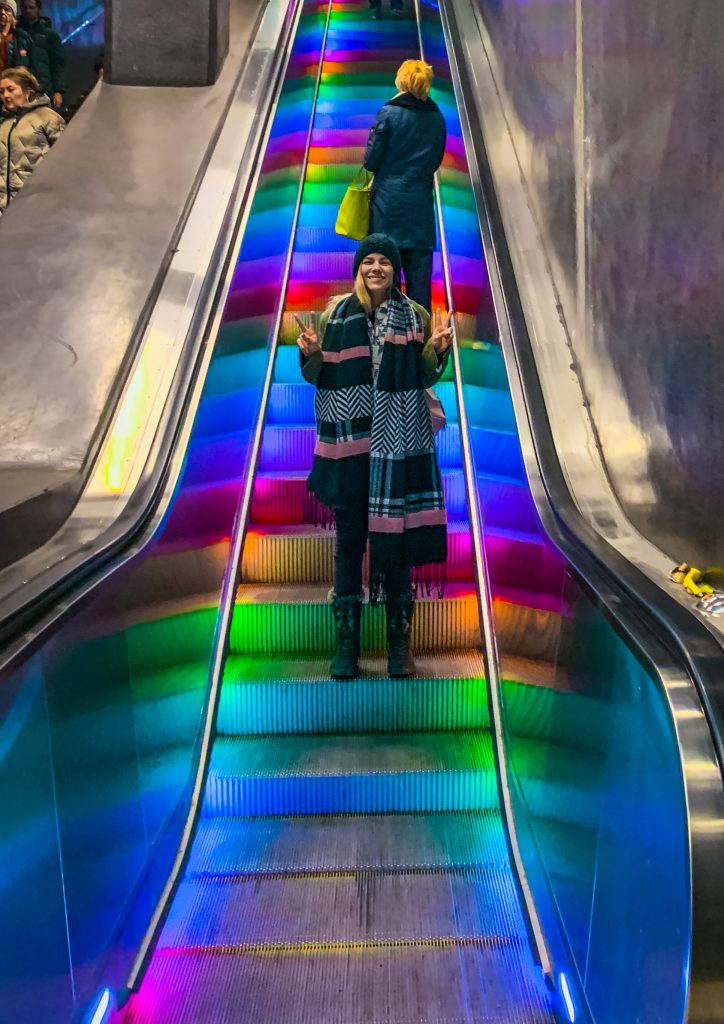
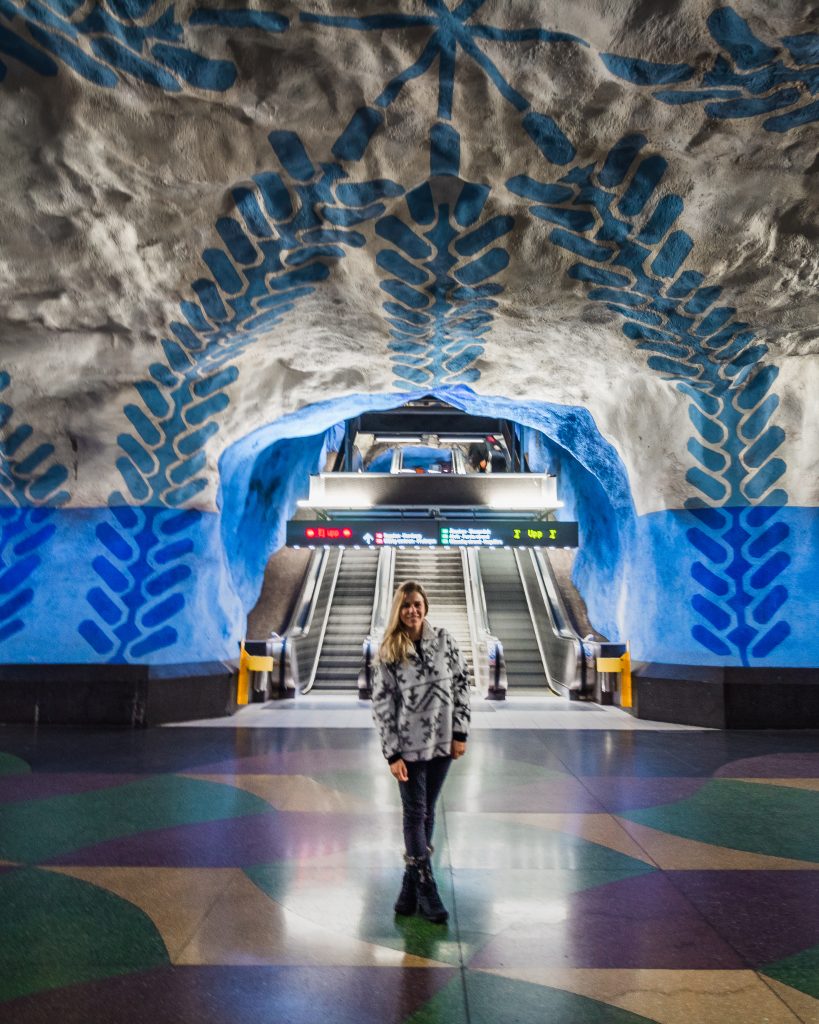
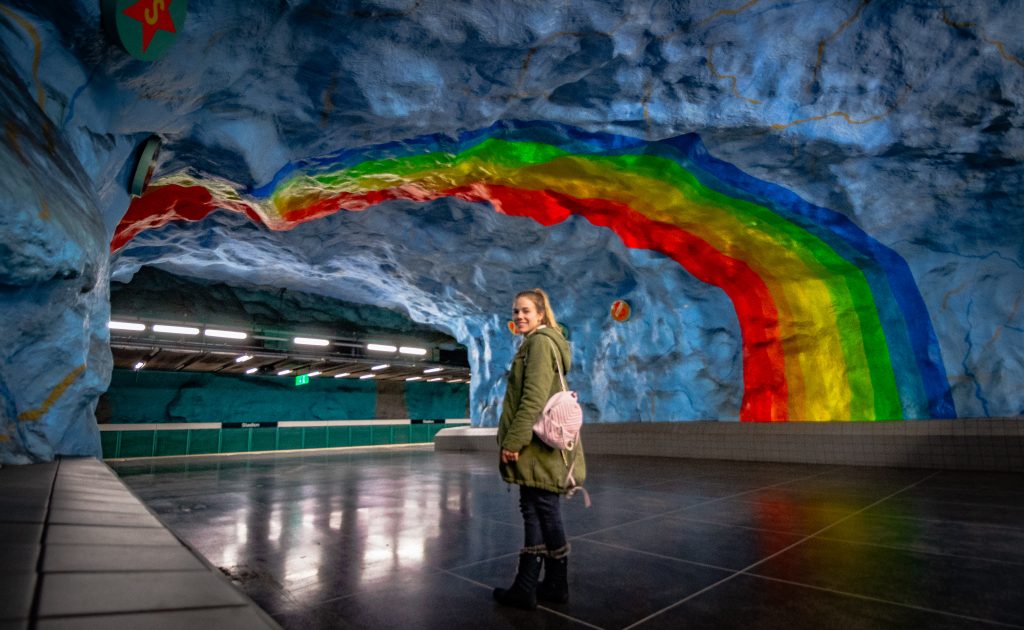
Like This Post? Pin It!
